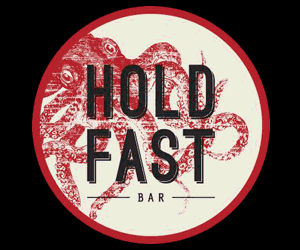Lost graveyards, orbs, Delhi Bells and ducking stools…Jonathan Schofield reveals more strange (and often missed) details
MANCHESTER has a lot of the weird and the wonderful about it. Often though, this is easy to miss. So here’s a guide to eight more curiosities to be found around the city centre (read part one here). Over time we'll reveal more in other areas of the city and beyond.
True centre benchmark
Where: St Ann's Square
In the days before smart phones and Sat Nav you waited for a milestone to come along to give you a distance between destinations. Around the region there are a few survivors which give the distance to Manchester, usually in the form of ‘Manchester, Saint Ann’s Square, 12 miles’ or some such.
Early Ordnance Survey maps also refer to St Ann’s Square. This is because the tower of St Ann’s Church was the lodestone of Manc map measuring, from its tower, surveyors would triangulate distances across South East Lancashire. Thus, in terms, of mapmaking the tower of St Ann’s Church, sporting its lowly arrowlike benchmark, is the true centre of the city. In Manchester all roads lead here.
Scrape the car park, reveal the dead
Where: Blackfriars Road
Between Blueprint Studios and a thousand and one building sites in Salford, just over the river, lies a scruffy surface car park. On this King Street car park once stood a church, The Bible Christian Church, surrounded by a graveyard. The church has gone but the dead remain, all 15,000 of them, including the man who created the church in the first place. His name was the Reverend William Cowherd, a truculent and charismatic man, who formed his own Christian sect after a schism with the Swedenborgian Church on Peter Street.
Cowherd believed that animals were sacred and should not be munched, so in 1809 he persuaded his congregation to give up meat and alcohol. His main disciple was Joseph Brotherton, later the first MP for Salford. Cowherd had the perfect name for a vegetarian and stimulated Brotherton, with others from the region, to lead the movement, hence the headquarters of the Vegetarian Society (formed 1847) is in South Manchester, Bowdon, after previously being in the city centre.
When Cowherd died in 1816 he had on his monument the epitaph: ‘All feared, none loved, and few understood’. This seems a harsh self-judgement, he may have been tough but he also cared for his congregation, offering amongst other things free education and a library. One of the tombs still peeps out from under the car park gravel.
Egypt in Salford
Where: Salford Central Station
The most delicious of Manchester and Salford’s city centre viaducts is the stretch by Sir John Hawkshaw, just to the south west of Salford Central Station. This was erected in 1842/43 for the Liverpool and Manchester Railway. Here Hawkshaw went all Egyptian – or rather Ancient Egyptian. Nicking ideas from antiquity was big in the late eighteenth and early nineteenth century - thus Manchester Art Gallery from the 1820s refers to Ancient Greece.
For the railway viaduct, Hawkshaw chose perfectly the temples of Karnak, Memphis and so on, held up by monumental columns. What better than to have these new civil engineering wonders of the industrial age held up by a monumental echo from those times? The red and cream painted columns here are lotus leaf, and the light grey columns have tightly bound bundles of papyrus. It’s all a bit grand and lovely.
Hawkshaw could never have been accused of being lazy. Born in Leeds, by 21-years-old he was a mining engineer in Venezuela. On return to England he worked with Jesse Hartley designing Liverpool docks, worked on the Manchester, Bolton and Bury Canal, the Manchester and Leeds Railway, the Lancashire and Yorkshire Railway. In London he was responsible for the Charing Cross and Cannon Street Railways, together with the two bridges carrying them over the Thames, and he worked on the Circle Line. He also advised or worked in Germany, Russia, India and elsewhere. He even built the Amsterdam Ship Canal....the list goes on. The Puerto Madero area of Buenos Aires' port is his baby too. Hats off to him. Where did those Victorians get all their energy from?
Orbs on a bridge
Where: Manchester Cathedral
Victoria Bridge is where Manchester and Salford kiss, the River Irwell swirling below. Note how high and proud the Cathedral sits above the waters. This is a good place to defend and a good place to start a town (see the next curiosity). It was around this point where the ‘ford’ of Salford lay. The first bridge was probably built in wood a thousand years ago. A stone bridge with a chapel upon it was built in the 1300s. This was key during the 1642 Siege of Manchester in the English Civil War, with battles fought around it. The Royalists never made it across and the Parliamentarian defenders finally triumphed after a seven days siege.
The present Victoria Bridge was completed in 1839 and leaps the river in one powerful elongated arch. There are orbs on scrolls decorating the bridge, referring to the royal authority of the recently crowned Queen Victoria. Construction had started in 1837, the first year of Victoria's reign, at a total cost of £20,800. The first vehicle to cross the bridge was a wagon belonging to Messrs Lupton and Adamthwaite, brewers, Cook Street, Salford. It was officially opened twelve years later by the Queen herself. A typesetter at The Times was dismissed when he couldn’t resist amending the line ‘Her Majesty passed over the bridge and duly declared it open’. He was fired because he’d changed the ‘a’ in ‘passed’ to an ‘i’.
First ditch attempt in Manchester
Where: Chetham's Library
The Roman fort of Mamucium fell into ruin when they left in the fourth or fifth century. When the Anglo-Saxons arrived at least a century later (although no-one really knows) there was no way they could settle in the old Roman fort at Castlefield, it was way too big for a small tribal group. So they went north to where the confluence of the Rivers Irwell and Irk formed cliffs to the south and the east.
Here they dug a ditch across the promontory created by these cliffs to provide an area they could more easily defend. Perhaps there was a tiny castle here, then by the Norman period a manor house, which was in turn succeeded by the present buildings in 1421, which started as priests’ quarters before becoming Chetham's Library and School.
In the exposed rock here, traces of that first ditch can still be seen at least 5m (17ft) beneath the level of Chetham's courtyard. The great depth and width of the ditch under the arch has given rise to the suggestion that it follows a natural gulley running towards the River Irwell which was widened to create a defensive feature. This ditch still lies many metres above the confluence of the rivers. The combined height from rivers through ditch to the ground level of Chetham's courtyard is 15m (50ft). This is a considerable height to scale for any river-borne aggressor. It was from this little Anglo-Saxon settlement that modern Manchester begins.
Belgium and battles at Victoria
Where: Victoria
Victoria Station is full of curios. The long façade of 1904 at Victoria is impressive, but it’s the outside canopy of delicate glass and iron, advertising destinations from Bolton to Belgium, that’s the main joy here. The inclusion of Belgium seems strange, but this was the home station of the Lancashire and Yorkshire Railway and they had ferry services running from Hull to Belgium, so it makes sense.
Other cracking period features in the station include the interior white tile map of the former rail routes over a vigorous WWI memorial designed by Henry Shelmerdine. The memorial features St George and the dragon, the latter representing German militarism. Other details include the panelled booking offices and the blue and gold mosaics advertising the former shops and services. The domed restaurant, decorated with a riot of fruit and other goodies, is also a treat.
Meanwhile, local architects BDP gave the station a fabulous, sweeping steel and ETFE (plastic polymer) roof in 2016, plus a real curiosity: a sinister hole-punched Corten steel gate, called the 'Soldiers’ Gate', from which it’s said Manchester and North Western WWI troops left for further training and then the trenches. The holes look like they’ve been blasted by shells and form a map of the cemeteries in Flanders where the British dead lie, or where they are commemorated if no body was found. To make it more sinister the numbers of the dead in each cemetery are included.
Punishment up the passage – ducking stool memories
Where: Back Pool Fold
Behind the Pret-a-Manger coffee shop on Cross Street is Back Pool Fold; an atmospheric, pungent, alleyway. The name refers to the moat of Radcliffe Hall, which was formerly in this area. The moat was the location of Manchester’s ducking stool. This was an open-bottomed chair attached to a pole, which could be levered over blocks into the moat, ducking the miscreant in the water. It was used to punish ‘lewde women and scoldes’. These were prostitutes and women who tampered with weights and measures in the market place, although ‘scoldes’ could refer to nagging wives. Men, as punishment for lesser offences, would be whipped at the whipping post or put in the stocks.
Many of these entertaining little passages between the major streets are medieval in origin, following old paths along field boundaries, hence the strange double-dog leg of Back Pool Fold.
Bells on columns – Delhi in Manchester
Where: King Street
There is a pure white slice of towering efficiency on King Street. This is Edwin Lutyens’ Midland Bank which opened in 1935. The occupiers now are Jamie’s Italian Restaurant, crowned by Hotel Gotham. The operators of the latter think the building looks like something from Batman. Lutyens’ might have been a little surprised by the latter turn of events. This is one of Manchester’s most beautiful and striking buildings. It’s clever too, reducing telescopically as it climbs to the pavilions on the roof.
There are a couple of cracking curiosities here. First, go into Jamie’s Italian restaurant and have a look at the columns capped with little bells on the capitals. These are a Lutyens trademark, called Delhi Bells, after the decoration he used for his work at New Delhi in India, when he was designing the new capital of India.
Then down in the basement there’s the former vault with its double key deposit boxes in pared down Art Déco-style steel. Stored down here has been everything from gems and gold to the master tapes of Manchester bands Joy Division and New Order.
When the bank was decommissioned prior to the restaurant refit a problem became apparent. Some of the boxes hadn't been emptied and still contained valuables, but the owners or their descendants couldn't be traced, so the Bank of England drilled the boxes open and found £1.1m in jewellery, deeds and assorted goodies. They also found a hand gun.














